Last Updated on July 22, 2022
What is Steel?
Before diving into properties of steel, let’s have a look at the steel itself. Some natural elements named metals can be found anywhere in the Earth. Remember the periodic table and metals from high school chemistry, like zinc aluminum, lead, copper, iron and etc. If you recall, steel was not in that group. The reason for that is steel falls under the category of metal alloys. It is classified as an iron alloy. This indicates that it truly has a chemical composition that is a combination of nonmetal (carbon) and metal (iron).
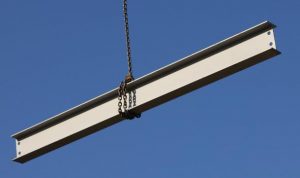
Although its carbon ratio varies from 0.02 to 1.7 percent, steel still exhibits the metal properties of iron. Additionally, during the production process, metal and non-metal materials are frequently added. The physical-chemical properties such as strength and resistance are improved by adding appropriate amounts of carbon and other alloying elements. Steel is now one of the most commonly utilized materials in the world because of these important properties of steel.
Properties of steel are quite important for a civil engineer since steel is one of the most commonly used construction materials in the world. Steel is perhaps the most essential engineering and construction material in the world because of its material properties. Steel has excellent formability and durability, as well as high tensile and yield strength and heat conductivity. Aside from these significant properties, the greatest distinguishing property of stainless steel is its resistance to corrosion.
Main Properties of Steel Material in Civil Engineering
1. Ductility of Steel
One of the quite important properties of steel is its ductility. The capacity of a material to be drawn or plastically deformed without fracture is referred to as ductility. As a result, it indicates how soft or malleable the material is. Steel ductility varies according to the types and amounts of alloying elements present. Increase in carbon, for example, improves strength while decreasing ductility.
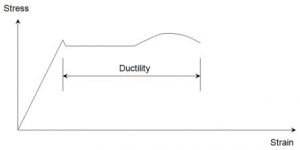
In other words, ductility is a measure of a metal’s capacity to resist tensile stress, which is defined as any force that pulls the two ends of an object apart. The plastic deformation that occurs in metal as a result of such types of strain is known as ductility. The term “ductile” refers to the ability of a metal composition to be stretched into a thin wire without getting weaker or more brittle in the process.
2. Tensile Strength of Steel
-
Yield Strength of Steel
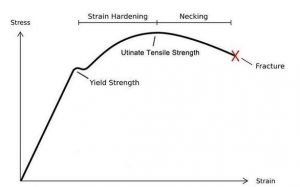
Yield strength is the highest amount of stress that may be applied before the material permanently changes its shape. This is an approximation to the elastic limit of steel. If the metal is stressed but does not reach the yield point, it will revert to its original shape once the tension is released. When the stresses exceed the yield point, the steel is unable to recover. Yield strength reflects the maximum load that can be safely applied to the metal, making it an important factor to understand when designing components.
-
Tensile (Ultimate) Strength of Steel
The amount of tensile stress that a material can resist before breaking or failing is referred to as its tensile (ultimate) strength. The ultimate tensile strength of a material is estimated by dividing the area of the material tested by the stress applied to the material, which is commonly given in pounds or tons per square inch of material. Tensile strength is an essential measure of a material’s capacity to function in an application, and it is commonly used to describe the properties of metals and alloys.
The most common method for determining an alloy’s tensile strength is to place a test piece in the jaws of a tensile machine. By progressively separating the jaws, the tensile machine applies the tensile stress. The strain necessary to fracture the test piece is then measured and recorded. Metal yield strength can also be tested. The amount of stress that a material can resist without permanent deformation is referred to as its yield strength.
3. Corrosion Resistance
Corrosion resistance measures a material’s ability to withstand damage caused by oxidation or other chemical processes. Materials have different levels of corrosion resistance. Metals that are exposed to rain, humidity, water or anything else that might cause the surface of a metal to oxidize are susceptible to corrosion damage. You can utilize stainless or galvanized steel, titanium, aluminum, weathering steel, or apply and maintain a sealant layer such as paint to prevent against corrosion.
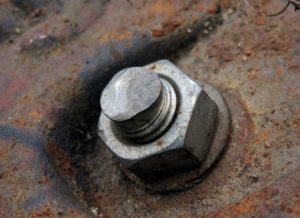
While corrosion resistant materials such as stainless steel, weathering steel, titanium, galvanized steel or aluminum are available, they are not corrosion proof. In the presence of corrosive chemicals, stainless steel has a very thin oxide layer that stays passive. It is possible that the passive layer will deteriorate, exposing specific areas to corrosion. Galvanized steel resists corrosion by forming a thin layer of zinc coating that binds with the iron.
4. Weldability
The weldability of steel grades is mostly determined by their hardness. This, in turn, is determined by the chemical structure of the material, especially its carbon content. Manganese, chromium, molybdenum, vanadium, silicon and nickel are other alloying elements that have a little influence on steel hardness.

Steel weldability is difficult to describe, although it is commonly understood to indicate the ability of steel to be welded using standard techniques without cold cracking. Steel weldability is inversely related to hardenability. Because carbon content has a significant impact on steel hardenability, it also has an effect on weldability. As a result, as the carbon content increases, so does the weldability. Other alloying elements, such as manganese, nickel, and silicon, have an effect on the weldability of steel too. Their effect, however, is not as important as the existence of carbon content.
5. Hardenability
Steel is a composition of iron, carbon ranging from 0.0 to 1.2 percent and alloying elements. The hardness is provided by carbon, and the alloying elements determine how deep this hardness will occur. This is known as “hardenability.” Hardenability is not the same as max hardness after quenching, which is solely determined by the quantity of carbon present and the proportion of martensite. Hardenability, on the other hand, refers to how deeply a steel alloy may be hardened. Steels that harden deeply are referred to as high hardenability steels, while steels that do not harden deeply are referred to as low hardenability steels. Carbon content, grain size, and alloying elements are the most important factors that are affecting hardennability and the rate of austenite transition.
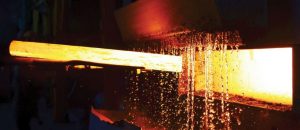
When a piece of steel undergoes thermal treatment, it is referred to as quenching and tempering. Tempering is the process of fast heating the plate to a high temperature, whereas quenching is the process of fast cooling the hot plate through a liquid such as water, oil, or anything else. The outside of the plate is rapidly chilled when the steel is quenched. The interior depths of the material may not cool as rapidly depending on the thickness of the plate. If the object cools too slowly, it may have a softer core and a tougher “shell.” The capacity of a steel to be hardened by that method is referred to as hardenability.
6. Machinability
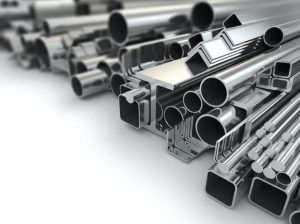
Three key elements affect the machinability of steel bars, which are thermal treatment, chemical composition and cold work.
Thermal treatment enhances steel machinability by lowering hardness and strength, decreasing stresses, and regulating microstructure. While this is often used in higher carbon steels, a spheroidize anneal is occasionally used in extremely low carbon steels to increase formability. Stress relief annealing, lamellar pearlitic annealing, and spheroidize annealing are machining techniques used to enhance machinability in bar steels.
The chemical composition of the steel is a crucial component that contributes to its machinability or lack thereof. Among the chemical elements that increase machinability are: carbon, lead, sulfur, phosphorus.
Low carbon steels are excessively ductile, resulting in sticky chips and workpiece material buildup on the tool edge (BUE). Machinability is optimum between 0.15 and 0.30 wt percent carbon. Machinability reduces as carbon content exceeds 0.30.
Lead is added to steel to provide an internal lubricant and minimize friction while cutting. Lead has no effect on the mechanical properties of steel.
Sulfur and manganese interact to generate manganese sulfides, which assist in chip breaking and enhance surface quality. Higher amounts of sulfur in non-resulfurized steels are preferable for machining.
Phosphorus strengthens the steel’s softer ferrite phase, resulting in a harder and stronger chip having less ductility, which promotes breaking and improves finishing.
Cold work enhances the machinability of low-carbon steels by diminishing the hot-rolled product’s high ductility. Coldworking the steel by drawing through a die or cold rolling produces harder, more brittle, and curled chips, resulting in a less built-up edge on the tool’s cutting edge. Because of the enhanced yield-to-tensile-strength ratio, your tools and machines will have to perform less effort to separate the chip.
7. Durability of Steel
One of the very important properties of steel is its durability. To begin with, steel is quite durable. It can tolerate harsh environments. Steel, as a compound metal composed of iron and carbon, is very resistant to most elements, making it perfect for places with high winds, frequent storms, and harsh weather. Steel is very ideal for stormy places because it can withstand the area’s severe winds and blowing sand. Steel is ideal for almost any application since it can sustain these harsh conditions without buckling or breaking.
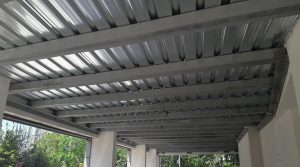
Being able to rely on the safety of your steel structure is a huge benefit for you, no matter what you use your building for. A solid and dependable structure, such as steel, implies less risk and responsibility, which may result in cheaper costs and less uncertainty for you. When it comes to pre-engineered construction, we enjoy how building has evolved to assure better and stronger buildings.
8. Toughness of Steel
It is in the nature of all materials to have certain flaws. These flaws take the shape of extremely small cracks in steel. If the steel is not tough enough, the crack can propagate quickly without plastic deformation, resulting in a brittle fracture. Brittle fracture becomes more likely when thickness, stress raisers, tensile stress and colder temperatures increase. Steel toughness and resistance to brittle fracture are determined by a variety of parameters that should be addressed throughout the specification stages.
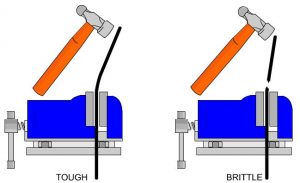
What are Main Uses of Steel?
In construction sector, steel is used in a wide range of projects, including the construction of infrastructures such as buildings, highways and railroads. In fact, the majority of structures, including skyscrapers, airports, stadiums and bridges are built with steel frameworks. Steel is also used as a reinforcement material in concrete when reinforced concrete structures are built.
Additionally, a wide range of automobiles and appliances consist of steel. Thanks to its strength and durability, it is also utilized in basic construction materials. Screws, bolts, nails, wire meshes and tie wires are a few of those materials. Moreover , it is employed in fields including mining, aerospace, pipeline, shipbuilding, and the design of machinery.
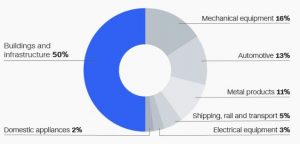
Other basic items made of steel include steel wool, basic tools, and personal armored vests for law enforcement and security purposes. Steel is also used for artistic purposes such as sculptures in addition to its functional applications.
Properties of steel material have been explained in this article. Hope you enjoyed it!

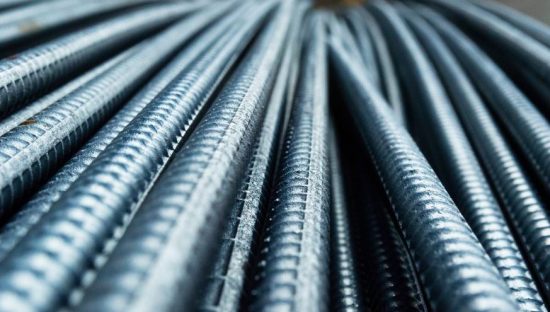
Pingback: Construction Site Management in Civil Eng. | techyildiz
Pingback: 9 Types of Civil Engineering | techyildiz